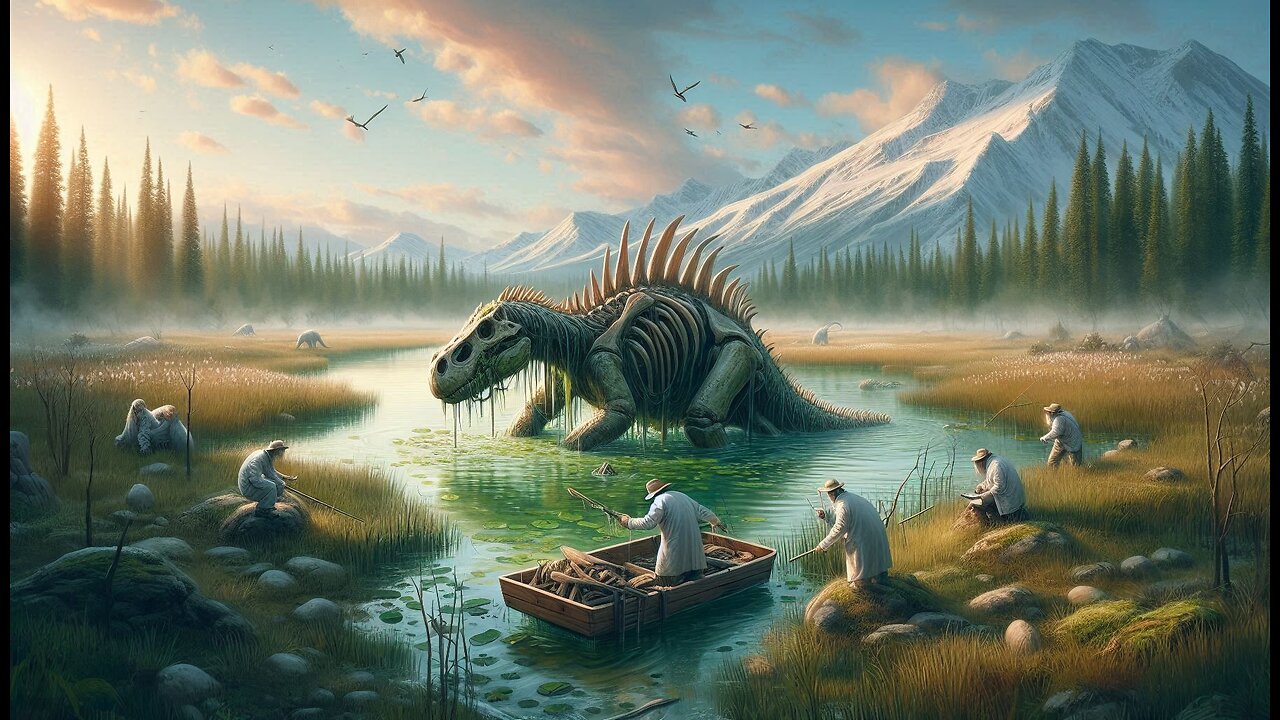Premium Only Content

Scientists Discover Ancient “Swamp Dweller” From the Age of the Dinosaurs in Colorado
Colorado paleontologists found a rare fossil mammal, Heleocola piceanus, from 70-75 million years ago. The discovery shows some ancient mammals were larger than previously thought.
A team of paleontologists near Rangely, Colorado, has discovered a new (or rather, ancient) state resident—a fossilized mammal roughly the size of a muskrat, which likely scurried through swamps during the Age of Dinosaurs.
The researchers, led by the University of Colorado Boulder’s Jaelyn Eberle, published their findings in the journal PLOS ONE.
Eberle and her colleagues named their discovery, which they identified from a piece of jawbone and three molar teeth, Heleocola piceanus. The animal lived in Colorado roughly 70 to 75 million years ago—a time when a vast inland sea covered large portions of the American West. (Fittingly, “Heleocola” roughly translates to “swamp dweller” in Latin).
“Colorado is a great place to find fossils, but mammals from this time period tend to be pretty rare,” said Eberle, curator of fossil vertebrates at the CU Museum of Natural History and professor in the Department of Geological Sciences. “So it’s really neat to see this slice of time preserved in Colorado.”
Compared to much larger dinosaurs living at the time like tyrannosaurs or the horned ancestors of Triceratops, the new fossil addition to Colorado might seem tiny and insignificant. But it was surprisingly large for mammals at the time, Eberle said.
-
 1:04:59
1:04:59
Man in America
11 hours ago“Summoning the Demon” — The AI Agenda Is FAR WORSE Than We Know w/ Kay Rubacek
46.5K27 -
 2:16:48
2:16:48
Tundra Tactical
9 hours ago $0.11 earned🎯💥 The World’s Okayest Gun Show 🔫😂 | LIVE Tonight on Rumble!
27.2K -
 3:36:03
3:36:03
Mally_Mouse
1 day ago🌶️ 🥵Spicy BITE Saturday!! 🥵🌶️- Let's Play: Tower Unite!
53.6K2 -
 58:59
58:59
MattMorseTV
8 hours ago $1.49 earned🔴Trump just BROKE Newsom.🔴
64.3K83 -
 18:14
18:14
Her Patriot Voice
9 hours agoWho Is WORSE for NYC: Trump Girl or Socialist?
45.8K33 -
 3:39:42
3:39:42
SavageJayGatsby
8 hours agoSpicy Saturday with Mally! | Road to 100 | $300 Weekly Goal for Spicy Bites!
49.2K1 -
 3:35:50
3:35:50
FomoTV
10 hours ago🚨 Swamp Theater: FBI Raids Bolton 🕵 Still NO Epstein Files, Trump's Troops & the Red Heifer Hoax 🐂 | Fomocast 08.23.25
22.4K7 -
 6:04:40
6:04:40
Akademiks
13 hours agoRoc Nation & Meg Thee Stallion did a 7 HOUR Deposition with me. Drake Secret Kid Finally Revealed.
58.7K2 -
 24:19
24:19
Stephen Gardner
9 hours ago🚨BREAKING: FBI Raid of John Bolton’s House Reveals THIS!
61K142 -
 8:31
8:31
MattMorseTV
11 hours ago $1.19 earnedTexas just did the IMPOSSIBLE.
51.4K66